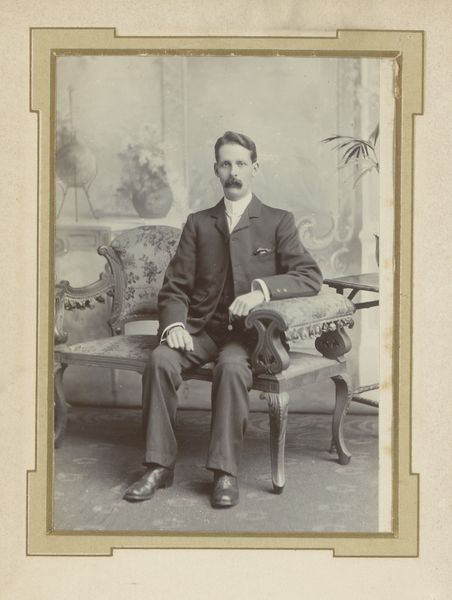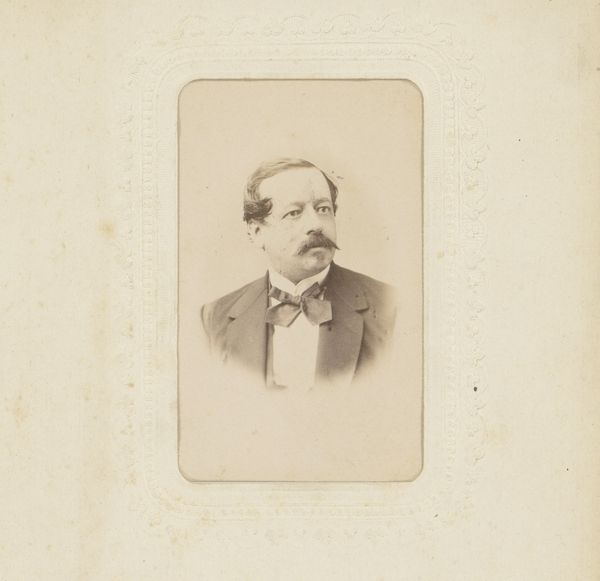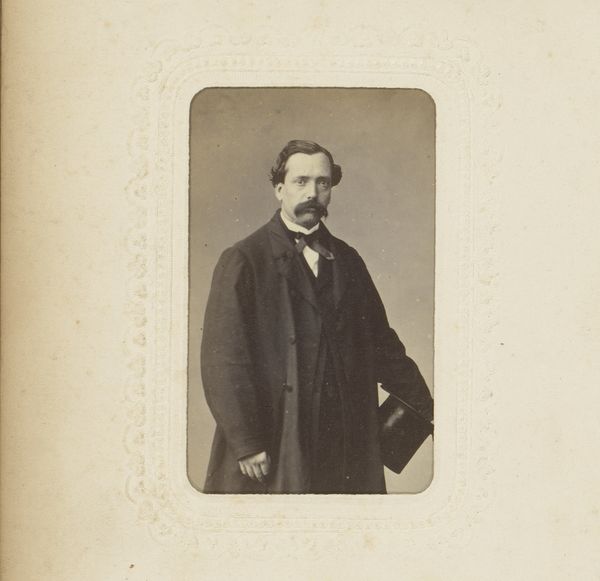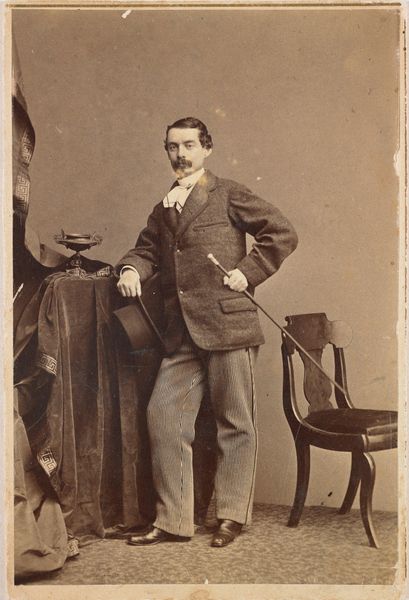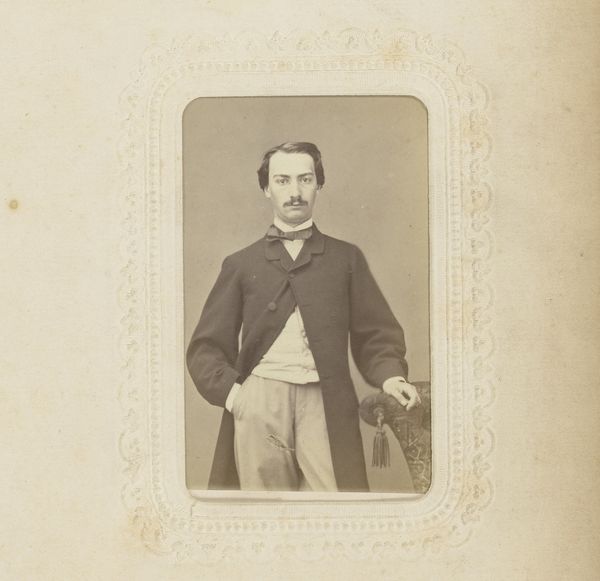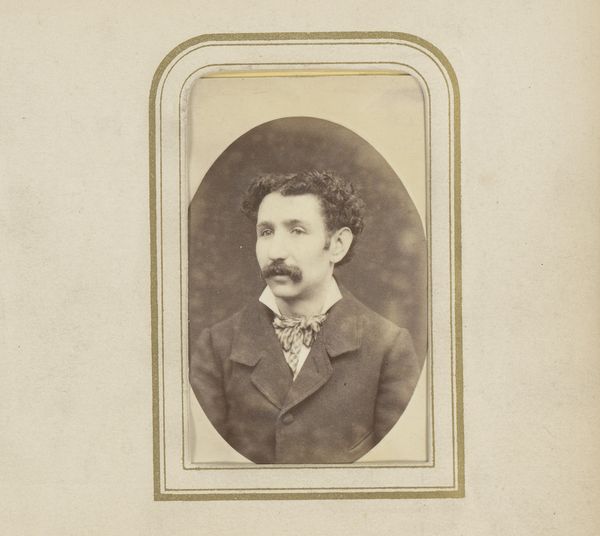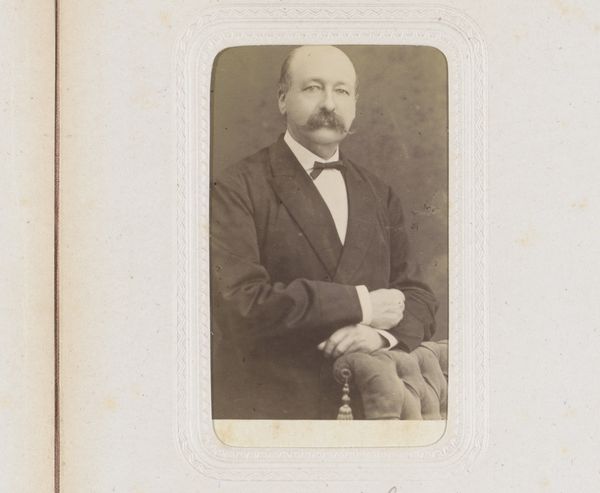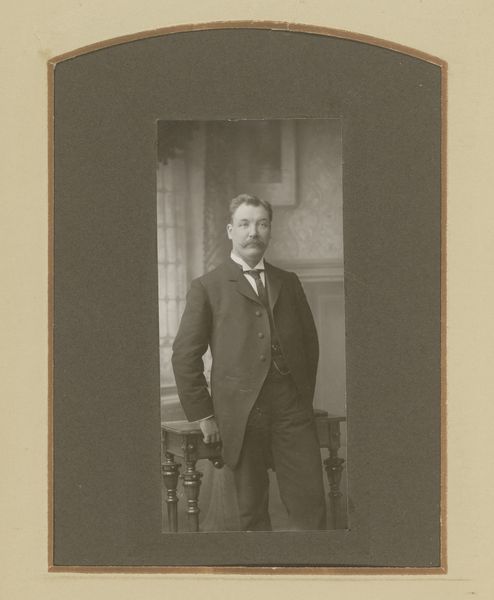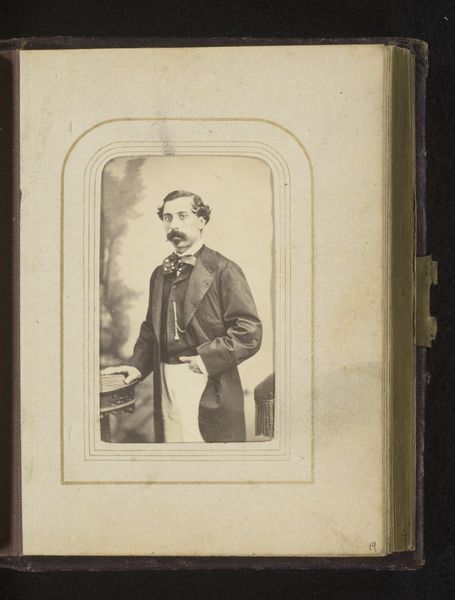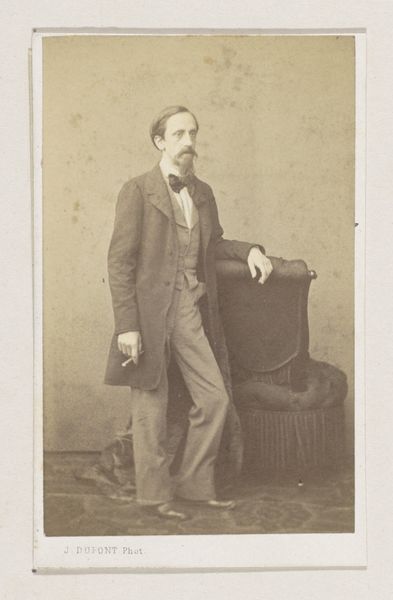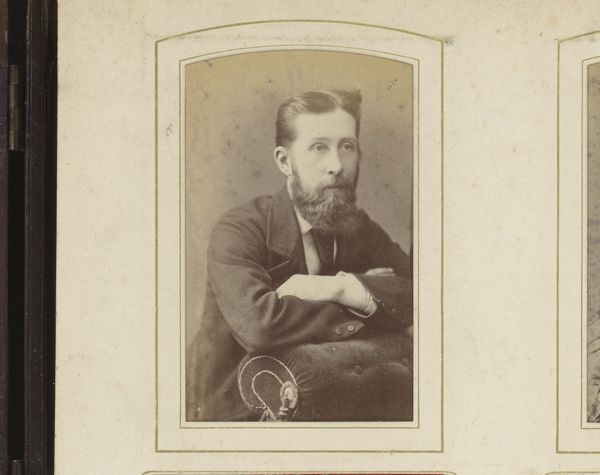
Dimensions: height 103 mm, width 77 mm
Copyright: Rijks Museum: Open Domain
This portrait of Karel Lodewijk Napoleon Bonaparte is an early photographic print, made by an anonymous artist. The sepia tone comes from the chemical process used to develop the image. Photography in this era was a complex blend of science and craft. The photographer had to be skilled in chemistry, optics, and composition, to coax an image from light-sensitive materials. It was labor intensive, far from the automated process we know today. Think of it as a collision of scientific knowledge and artistic intention. While seemingly objective, photography wasn't neutral. Early portraits like this one were carefully staged, designed to project power and status. Consider the sitter's pose, the backdrop, and the very fact of his having been photographed – a mark of privilege in the mid-19th century. By looking closely at the materials and processes, we can gain a deeper understanding of the image, and its place in a rapidly changing society. It invites us to reflect on the labor involved, and the social context that shaped its creation.
Comments
No comments
Be the first to comment and join the conversation on the ultimate creative platform.
